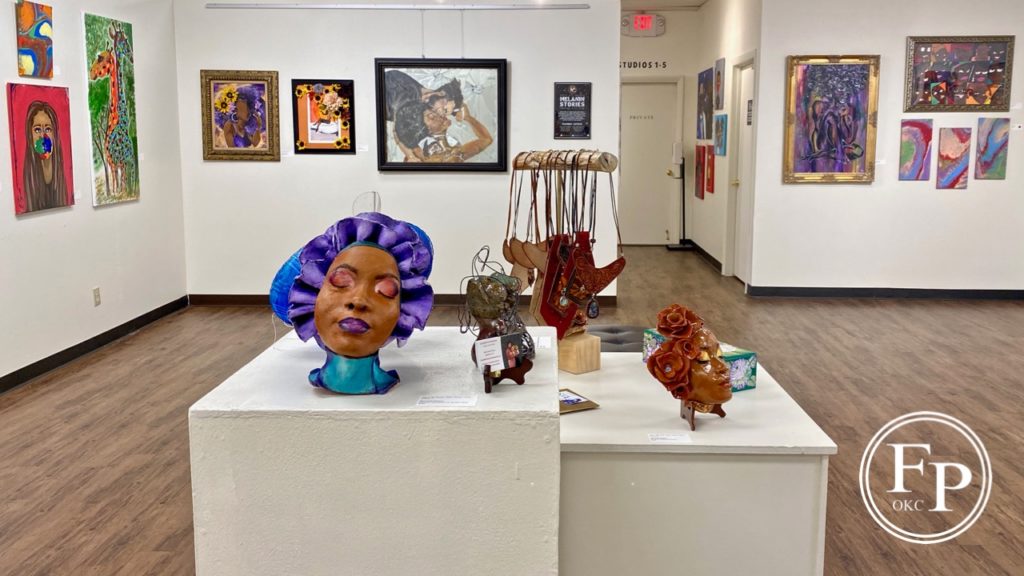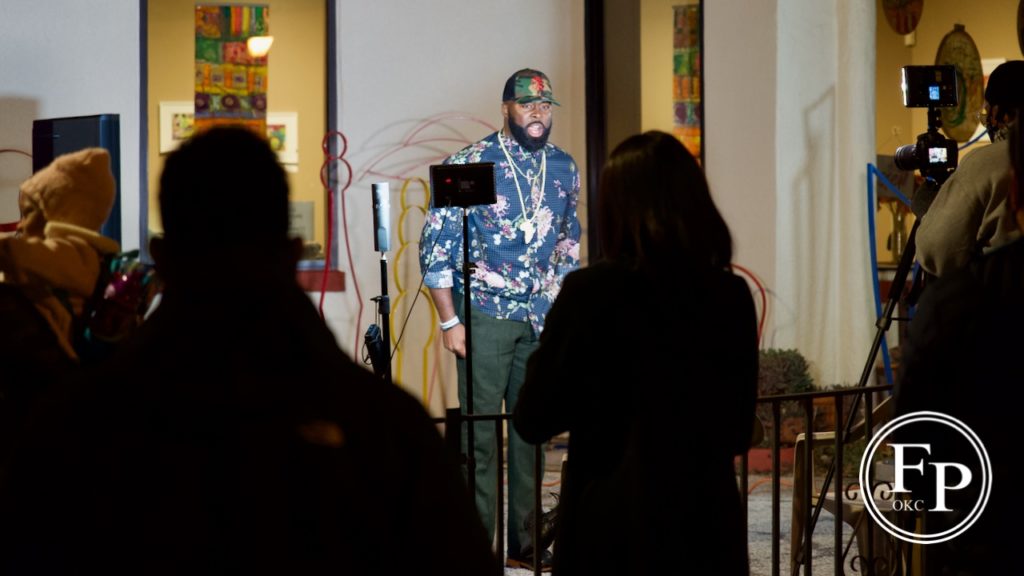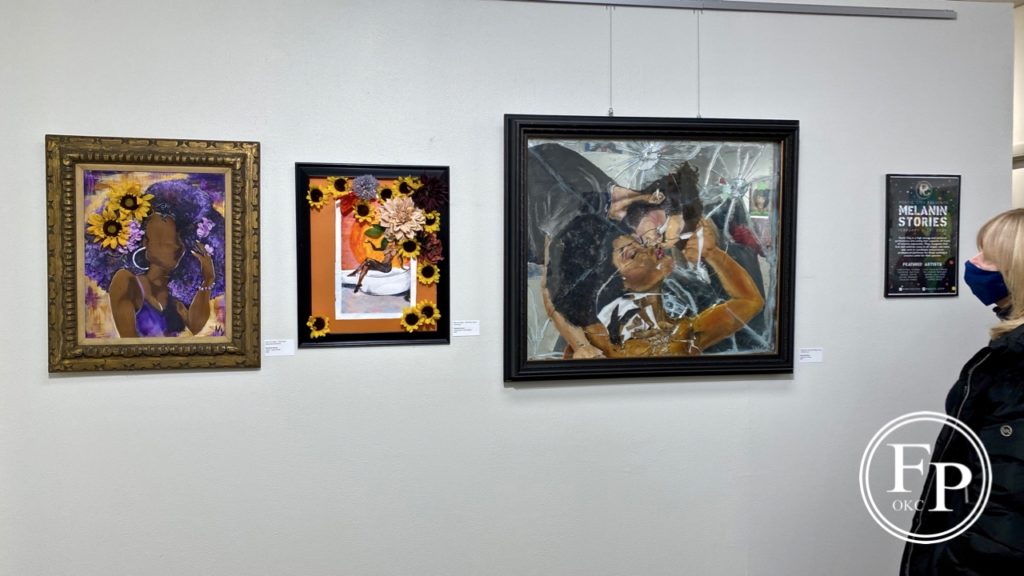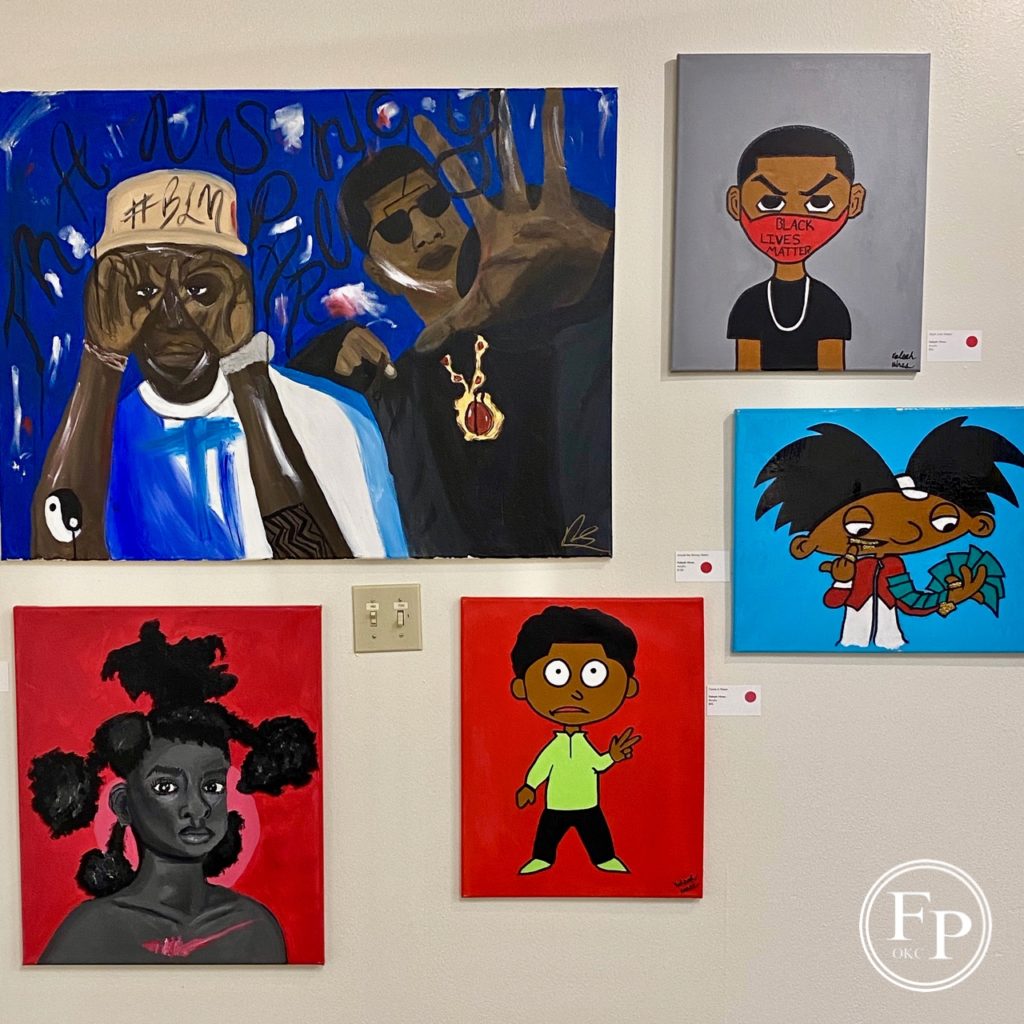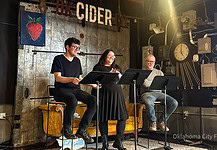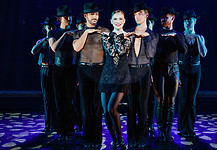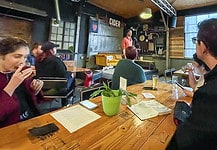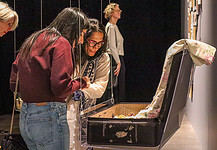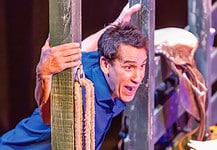Last Updated on February 6, 2021, 8:05 PM | Published: February 6, 2021
As we edge closer to the end of the largest public health crisis in memory, many have speculated as to what a post-pandemic future looks like. Looking back, the influenza pandemic of the early 20th century was immediately succeeded by the Roaring 20’s, and even further back, the Black Death is often given credit for fueling an unprecedented era of cultural genesis in Europe commonly known as the Renaissance.
On Friday, Oklahomans were given a glimpse at what the future holds for Oklahoma City after a brutal year. Paseo’s First Friday of February launched an exhibition in the Paseo Arts and Creativity Center by Poetic City called Melanin Stories, an incredible and powerful presentation of the Black voice in Oklahoma City.
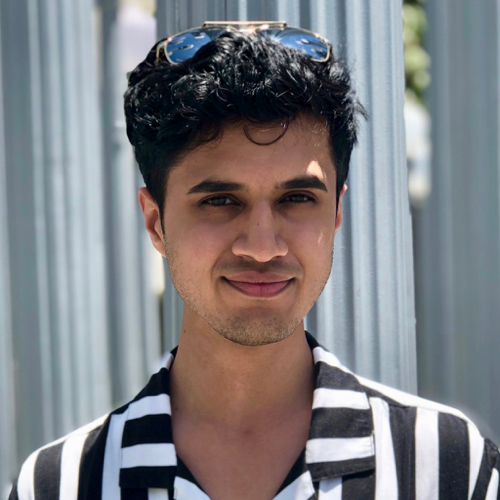
The Arts
with Devraat Awasthi
Poetic City, an art collective that showcases primarily Black artistry, organized Melanin Stories after a couple years of occasionally performing at Paseo.
Bleek and Poetic City’s curator, Sunee Rice, chose the artists showcased on a competition basis. As Poetic City’s Bleek notes, Paseo is predominantly white, and after Paseo reached out the Poetic City about launching an exhibition, they decided to take on the project to “bring more diversity there and more unity.”
Balancing these two elements of the exhibition is, for Bleek, about disrupting the whiteness of Paseo and introducing an element of “discomfort” for viewers.
In organizing this exhibition, Paige Powell, Program Manager at the Paseo, says the though originally scheduled earlier, Melanin Stories was delayed because of the number of COVID-19 cases as the winter progressed.
This delay, however, allowed Melanin Stories to launch during February, Black History Month, providing a stronger contextual environment to the exhibition. As with all events nowadays, masks and social distancing are mandated by the Creativity Center where the exhibition takes place, and Powell recounted few problems in enforcing them.
The breadth of the work exhibited is frankly too enormous to cover in one article.
There isn’t a definable continuous thread between the works on the points of aesthetic – each of the artists is engaged in an entirely unique project. In this way, the Poetic City artists balance the unity of their goal and subject with a diversity of expression and choice. Each artist, then, is a different voice in the same choir.
There are landscapes, portraits, and photographs of every possible artistic inclination.
NyLainah Brewer’s portraits, in particular, stand out for their creativity and ingenuity. Faceless portraits are silhouetted by flowers planted throughout the painting, crafting a visual delight with an original approach to texture in her medium.
Sunee Rice’s paintings are another exceptionally beautiful collection of work. Her bright and vivid colors are animated by an unapologetically bold composition. Talent can be found in each frame, on every wall, and each artist is contributing to a thriving anthology devoted to color and the Black life.
The event on Friday, however, was dominated by a stellar performance of poets speaking, singing, and rapping just outside the gallery. All the artists, including the performing artists, are based in Oklahoma City.
Friday’s performance was an awe-inspiring showcase of homegrown talent, and an allusion to where Oklahoma City and the Black community that forms one of its central pillars can possibly go.
Poets were given an opportunity to speak on the topics of Black history, Black empowerment, and spun truly unblemished verses from these prompts as the DJ supported by, as Bleek puts it, “playing our culture’s music.”
Poetic City’s performances include poetry, rap, comedy, dance, and any other feasible form of performative art, and can be seen on their Instagram (@poetic.city), Facebook (Poetic City), or YouTube channel (Poetic City). They also provide an educational online curriculum through the Oklahoma Arts Council.
Although distinct in artistic style, each artist presented in Melanin Stories were one part of a united voice on the expressed life of Blackness, especially as it is expressed and lived in Oklahoma City.
Viewers will notice that the vast majority of art showcased is not protest art, and Bleek elaborates the importance of this by telling the story of a 12-year-old girl who sold most of her art on Friday and explains that he “wants her to worry about being a kid.”
For Melanin Stories, the context of the ongoing calls for justice and the Black Lives Matter protests this past summer are not “the battle of the art exhibit.”
Poetic City is “not asking you to come out here and be a protestor, I’m asking you to come out here and paint,” as Bleek puts it (although, just a few doors down, an incredible exhibition of three Black artists proves that art as protest is still a dynamic force in self-expression).
The significance of this exhibit cannot be overstated.
Many Black artists across the nation have described difficulty in exhibiting, selling, and expressing art that is not protest-related. Perhaps well-intentioned white audiences and curators are often uninterested in art by Black creators that isn’t about slavery, segregation, or struggle.
In Melanin Stories, however, artists are given the opportunity to shed the pressure to tell a story of hardship, and instead embrace the joy, life, and triumph of Blackness in America in a freely expressed medium.
For Oklahoma City residents still uncertain about what the future holds, Melanin Stories is worth the visit. This exhibition provides hope that there is still beauty to be found in ourselves and our home.
After a pandemic which has claimed the lives over millions around the world, and which, it should be noted, has had a particularly devastating effect on Black and Latinx communities, Melanin Stories gives artists and visitors the opportunity to communicate about what rebuilding looks like.
Despite disease, discrimination, and electoral disturbance, the pulse of the city is still strong.
The show runs through February 27 at the Paseo Arts and Creativity Center, 3024 Paseo, Oklahoma City, OK 73103. Call 405.525.2688 for hours.
Devraat Awasthi is an art reporter for Free Press, a full-time law student at the University of Oklahoma, and is interested in pop culture’s role in public communities.


